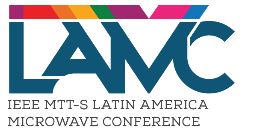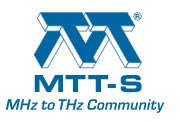Dr. Dominique Schreurs
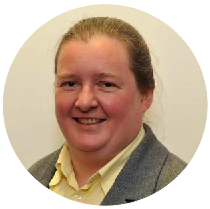
| Dominique M. M.-P. Schreurs (S’90–M’97–SM’02–F’12) received the M.Sc. degree in electronic engineering and Ph.D. degree from the University of Leuven (KU Leuven), Leuven, Belgium. She is currently a Full Professor with KU Leuven. She has been a Visiting Scientist with Agilent Technologies, Eidgenössische Technische Hochschule Zürich (ETH Zürich), and the National Institute of Standards and Technology (NIST). Her main research interests concern the (non)linear characterization and modeling of active microwave devices, and (non)linear circuit design for wireless power transfer and biomedical applications. Prof. Schreurs servs on the IEEE Microwave Theory and Techniques Society (IEEE MTT-S) Administrative Committee (AdCom). She has been an IEEE MTT-S Distinghuished Microwave Lecturer. She is the editor-in-chief of the IEEE Transactions on Microwave Theory and Techniques. She is past chair of the IEEE MTT-S Educational Committee, and of the IEEE MTT-S Technical Committee (TC-11) on Microwave Measurements. She also serves as officer on the Executive Committee of the ARFTG organization. She was general chair of the 2007 and 2012 Spring ARFTG Conferences. She was also co-chair of the European Microwave Conference (EuMC) in 2008. Currently is president of the IEEE Microwave Theory and Techniques Society (MTT-S). |
Dr. Patrick Roblin
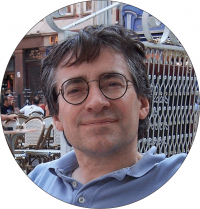
| Patrick Roblin received the Maîtrise de Physics degree from the Louis Pasteur University, Strasbourg, France, in 1980, and the D.Sc. degrees in Electrical Engineering from Washington University, St. Louis, MO, in 1984. In 1984, he joined the Department of Electrical Engineering, at The Ohio State University, Columbus, OH where he is currently a Professor. His present research interests include the measurement, modeling, design and linearization of non-linear RF devices and circuits such as power-amplifiers and MIMO systems. He authored and co-authored two textbooks published by Cambridge University Press. He is the founder of the Non-Linear RF research lab at OSU. He has also developed at OSU two educational RF/microwave laboratories and associated curriculum for training both undergraduate and graduate students. He is currently serving as a Distinguished Microwave Lecturer for IEEE-MTT.New Design Paradigm for Power Efficient RF Amplifiers Patrick Roblin roblin.1@osu.edu The design of power efficient RF/microwave power amplifiers (PA) is of critical importance for modern communication systems. In the search for the optimal power-efficient PA operation, designers are relying on waveform engineering at the current generator reference planes of the transistors to minimize the power dissipated by the transistor. However a huge design space must be explored in simulations to find the source and load multi-harmonic impedance terminations required to realize these desired internal waveforms. A new design paradigm has emerged in which a nonlinear embedding device model is used to synthesize the optimal source and load terminations in a single simulation. This technique greatly accelerates the design of PAs of various classes and can also be applied to the design of broadband amplifiers and examples such as class-J, continuous class-F and active-load balanced PAs. Finally the application of the embedding model to the design of PA architectures such as Doherty and Chireix PAs will be presented. These PAs provide a high average power efficiency when operating with communication signals with large peak-to-average power. New design methodologies are now available which combined with the embedding model greatly accelerate their design. |
Dra. Zoya Popovic
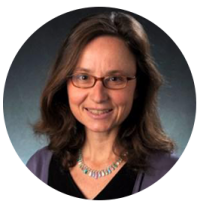
 | Zoya Popović received her Dipl. Ing. degree from the University of Belgrade, Serbia, in 1985, and the M.S. and Ph.D. degrees from Caltech, Pasadena, California, in 1986 and 1990, respectively. Her doctoral thesis was on large-scale quasi-optical microwave power combining. She joined the faculty of the University of Colorado in Boulder in August 1990, where she became a full professor in 1998, and received an endowed professorship in 2006. She has developed five undergraduate and graduate electromagnetics and microwave laboratory courses and co-authored (with her late father) Introductory Electromagnetics for the junior-level core course for electrical and computer engineering students, translated to several foreign languages. Her research interests include high-efficiency linear microwave power amplifiers, low-loss broadband microwave and millimeter-wave circuits, millimeter-wave and THz quasi-optical techniques, intelligent RF circuits, active antenna arrays, cryogenic circuits, microwave radiometry, and wireless powering for low-power sensors. She was awarded as IEEE MTT Distinguished Educator Award in 2013; Holland Teaching Award by University of Colorado in 2011 and 2013; and Distinguished Professor by University of Colorado in 2010, among others.Medical Applications of Microwaves:High-Field MRI and Microwave Internal Body Thermometry Zoya Popovic zoya.Popovic@colorado.edu This talk presents two topics that use microwave techniques for medical applications: (1)design of exciters and bore for human-sized 10.5-T MRI machines; and (2) a study of near-field radiometry for internal temperature measurements of the human body. The focus of the first topic is design of cavity and probes for improving uniformity of the circularly-polarized B-field inside phantoms for high-field travelling-wave MRI imagers. The phenomenology of high-field imaging and its resulting challenges will be highlighted, followed by simulation and experimental data using a research Siemens instrument. Although MRI can be used for measuring internal body temperature, it is expensive, large and slow. Radiometry is shown to be a feasible method for implementing a portable or even wearable microwave thermometer. One of the possible frequencies of operation is the 1.4 GHz quiet band, which is appropriate for centimeter penetration into tissues with minimized radio-frequency interference (RFI). The total blackbody power from a tissue stack is received by a probe placed on the skin, designed to receive a high percentage of the total power from a buried tissue layer. Temperature retrieval for sub-surface tissue layers is performed using near-field weighting functions, obtained by full-wave simulations with known tissue complex electrical parameters. Various sensitive receiver architectures are discussed, as well as instrument and model calibration. Measurements are presented using a calibrated Dicke radiometer at 1.4GHz for various phantom tissues. It is shown that temperature can be tracked within a fraction of a degree for a phantom muscle tissue layer under phantom fat and skin layers, and that RFI can be reduced with a second probe and adaptive processing. Additional measurements on the human cheek show good agreement with independent thermocouple measurements inside the mouth. |
Dr. Mike Golio
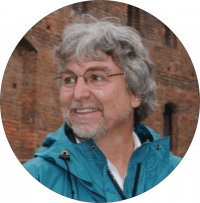
 | Mike Golio, BSEE, University of Illinois, 1976; MSEE, North Carolina State University, 1980; PhD Electrical Engineering, North Carolina State University, 1983. He conducted pioneering work on large signal microwave device modeling. He served as an Assistant Professor at Arizona State University where he conducted research in nonlinear modeling. The IEEE recognized this work by making Dr. Golio a Fellow of the Institute in 1996. In 2002 he was given the IEEE MTT-Society’s N. Walter Cox Award for exemplary service in a spirit of selfless dedication and cooperation, and in 2012 was awarded the IEEE MTT-Society Distinguished Service Award. As Director of Engineering at two fortune 500 companies, Dr. Golio directed large R&D organizations, managed corporate IP committees, and supported corporate initiatives. He is author of hundreds of technical papers, book chapters, presentations and editor of eight engineering handbooks. He has held a variety of positions in both the microwave and semiconductor industries, and within academia. He is also a very active volunteer in IEEE professional activities. In addition to his technical pursuits, Dr. Golio is also an avid para-archaeologist and participates in a number of volunteer activities to support archaeology research and field work.Strategic Planning for RF Technologies: Implications for 5G and IoT Emerging Radio Productst Mike Golio, Golio Endeavors m.golio@ieee.org Realizing new products that incorporate microwave radios often involves introduction of emerging RF material and component technologies. Matching emerging technologies to new products requires that projections of the new product RF specifications be aligned with the optimal choice of emerging RF technologies. Further, the timeline for product introduction and RF technology maturation must be compatible. This paper examines the RF strategic planning process required to insure success.Evaluation of the technology maturation process from theory to proof-of-concept demonstration to predictable, repeatable, reliable, and ultimately to manufacturable is presented. This process is documented using historical literature for several semiconductor technologies that are currently supporting high volume production applications. The data indicates that the evolution of new technologies from concept to high-volume production can take several decades.For over 50 years, technologists working on digital products have held a significant advantage over their microwave colleagues in strategic planning because of the guidance implied by Moore’s Law. RF devices have not and cannot be scaled in a fashion that is even remotely similar to digital device scaling. This paper examines the issues that invalidate Moore’s Law for RF and considers alternative figures-of-merit for RF device development. Rather than functionality, RF device designers are required to consider frequency, power, and in some cases, noise figure as the key design constraints. For high volume applications, the best RF device is the one that meets the minimum RF specifications and is most repeatable and reliable rather than the smallest or fastest.Current plans for 5G and IoT imply a staggering number of new radios with challenging specifications will be needed in the new products. At complete build out, we see projections of hundreds of radios per household or individual. As we approach the emerging applications of 5G mobile and IoT, it is also important to understand that many of these products with embedded radios are now cost free to the consumer. Things that used to cost thousands, or even millions of dollars only a decade or two ago are now given away as part of a phone contract. The impact of demonetization of RF products will also force constraints on the “best” RF components for emerging products. The paper will also examine the trend to demonetize products and discuss the implications for RF component and system engineering. |
Dr. José Ernesto Rayas-Sánchez
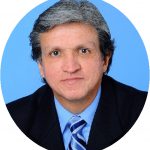
 | José Ernesto Rayas-Sánchez received the B.Sc. degree in electronics engineering from ITESO, Guadalajara, Mexico, the Master’s degree in electrical engineering from Monterrey Tec, Monterrey, Mexico, and the Ph.D. degree in electrical engineering from McMaster University, Ontario, Canada. He is Profesor Numerario (honorary distinction) with ITESO – The Jesuit University of Guadalajara, where he is Chair of the Doctoral Program in Engineering Sciences . He leads the Research Group on Computer-Aided Engineering of Circuits and Systems (CAECAS) at ITESO. He is a member of the Mexican National System of Researchers (SNI, for its initials in Spanish). His research focuses on computer-aided and knowledge-based modeling, design and optimization of high-frequency electronic circuits and devices.Dr. Rayas-Sánchez is Chair of the Technical Committee on Computer Aided Design (MTT-1) of the IEEE Microwave Theory and Techniques Society (MTT-S). He is member of the Technical Program Reviewers Committee of the IEEE MTT-S International Microwave Symposium (IMS). He serves as reviewer for many scientific publications, including IEEE Transactions on Microwave Theory and Techniques, IEEE Microwave and Wireless Components Letters, IEEE Antennas and Wireless Propagation Letters, and the International Journal of RF and Microwave Computer-Aided Engineering (Wiley InterScience). He was the General Chair of the First IEEE MTT-S Latin America Microwave Conference (LAMC-2016, Puerto Vallarta, Mexico, Dec. 2016). During 1994-1996, he was the IEEE Guadalajara Section Chair. During 2004-2005, he was the IEEE Mexican Council Chair, as well as the IEEE Region 9 Treasurer. Since 2013, he is IEEE MTT-S Regional Coordinator for Latin America. He has been an elected AdCom member of the IEEE MTT-S for the period 2016-2021.Space Mapping Design Optimization: Power in Simplicity Rooted in Engineering Practice José Ernesto Rayas-Sánchez erayas@iteso.mx This talk describes one of the most powerful and computationally efficient optimization approaches in RF and microwave engineering: the space mapping approach to design. Invented in 1994 by Prof. John Bandler from McMaster University in Canada, the space mapping technique has experienced an impressive evolution in terms of variations, improvements, and engineering applications. Space mapping optimization methods belong to the general class of surrogate-based optimization algorithms. They are specialized on the efficient optimization of computationally expensive objective functions. This talk provides a brief overview of the most fundamental space mapping optimization methods developed until now. It explains in more detail the space mapping technique most widely adopted in academia and industry: the Broyden-based input space mapping algorithm, better known as aggressive space mapping (ASM). The two main characteristics that explain its popularity are illustrated: 1) simplicity, and 2) efficiency (when it works, it works extremely well). The fundamentals behind ASM are explained, accentuating key steps for its successful implementation, as well as typical scenarios where it may fail. A number of classical as well as recent applications in different engineering fields are reviewed. Finally, some future directions regarding space mapping are ventured. |
